-
Posts
2,258 -
Joined
-
Last visited
-
Days Won
60
Content Type
Links Directory
Profiles
Articles
Forums
Downloads
Store
Gallery
Blogs
Events
Classifieds
Posts posted by Sam Buchanan
-
-
2 hours ago, GTfastbacker said:
Gentlemen,
since our 1941 Business Coupe came without battery i like to ask, is ot a positive ground car?
I am pretty sure it is but to prevent any damage it’s better to double check.
Thank you
Joe
You can install the battery either way and the car will start and run fine if it still has a generator. Once you have it started look at the ammeter. If it shows discharge when you rev the engine the battery is installed backwards. You will then know how the car is wired.
Technically the ignition coil is polarity sensitive but it will work either way. As long as you don't have a radio installed and turned on there isn't anything in the car that will be damaged by reverse polarity. I'm not sure what happens if an alternator is connected backwards but it's very unlikely your car has an alternator.
-
Walmart, Autozone, etc, the least expensive store-brand detergent 10W-30 oil on the shelf......the P15 is happy. That oil is far superior to anything available in 1948.

-
Yes, get everything working on the bench so you can easily see what's going on. You don't need much of a meter, I have several of these $7 cheapies scattered around:
https://www.harborfreight.com/7-function-digital-multimeter-59434.html
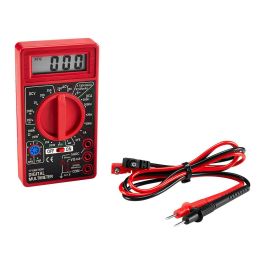
-
Two points.
If you have a multimeter that will read voltage when you touch the battery terminals it is sufficient for this troubleshooting, a more expensive meter isn't needed.
The three terminal solenoid should work if the wiring is correct and it and the starter aren't defective.
-
15 minutes ago, Plymouthy Adams said:
you neglect the fact I called two specific brand...these are calibrated....of course you squeeze them but you CANNOT over crimp....
But you could under crimp.......
-
 1
1
-
-
Might be a good idea to do your troubleshooting on the bench until you figure out what is going on.....a whole lot easier on the (your) body!
-
Naw.....I much prefer ratcheting crimpers, they apply the same force every crimp regardless of the forearm strength of the operator.
-
 2
2
-
-
Returning from a country road run after dark recently (and during the season when deer are really active!) I noticed the headlights would occasionally briefly go dark as I switched from low to high beam. I took this as the original 1948 dimmer switch telling me it has gotten tired and is ready for retirement. I believe we should always listen to our cars when they are trying to tell us something!
Not wanting to be suddenly left blind on a very dark and winding country road I decided to replace the still mostly functional switch. Andy Bernbaum has the switch listed for $35 plus their steep shipping rate but Rock Auto has a direct replacement Standard brand, made in the USA switch for less than $25 shipped to my front porch. Easy decision.
The box states made in Mexico but the switch is stamped Made in USA.
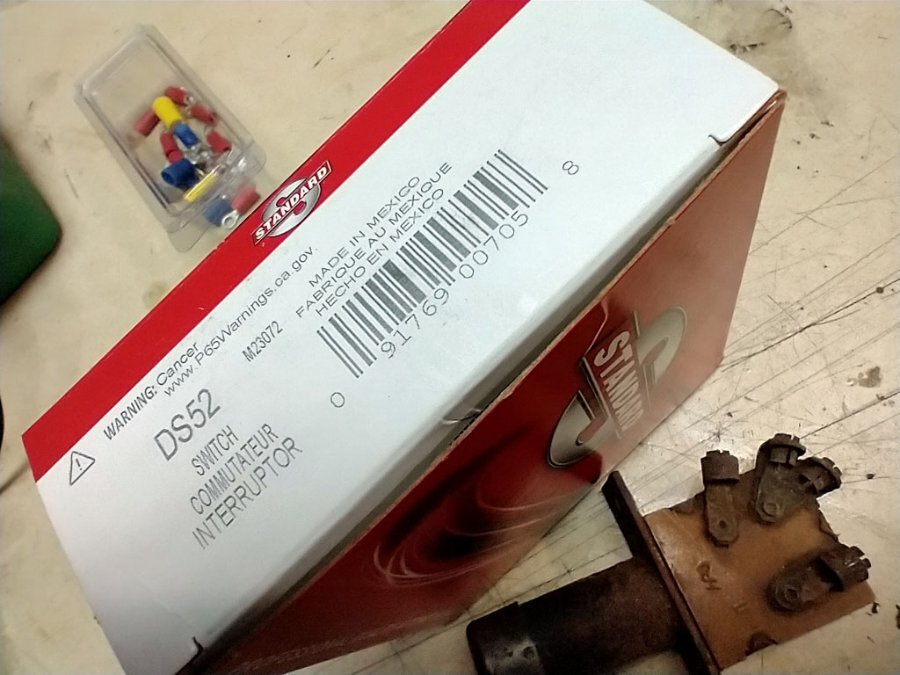
There is enough slack in the wiring harness to pull the old switch up into the engine compartment for relatively easy access. Of course the old cloth insulation was in pretty sad condition. The battery was disconnected to eliminate getting across something hot while handling the harness.
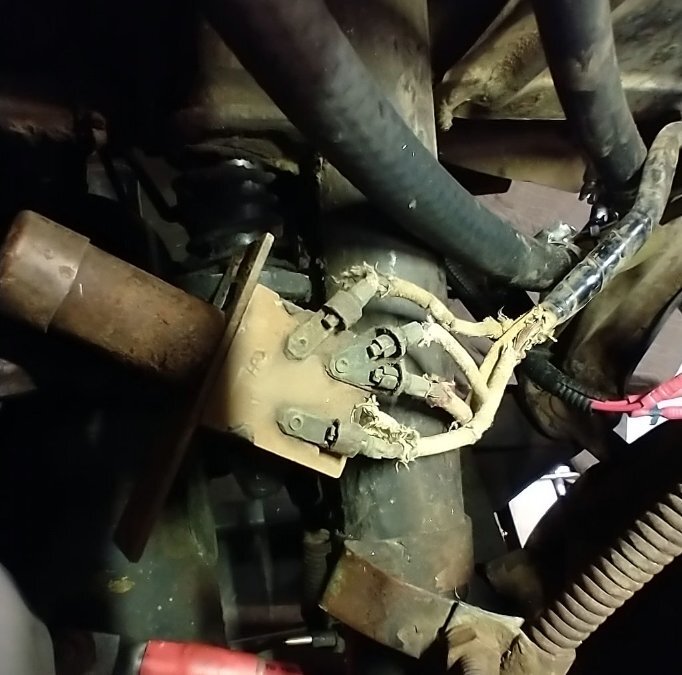
The new switch uses screws instead of bullet connectors but this wasn't a problem since the old insulation needed attention. I unwrapped the harness enough to get back to good wire and shrink tubing was slid down over the old insulation prior to new eyelet terminals being installed with a proper ratcheting crimper.
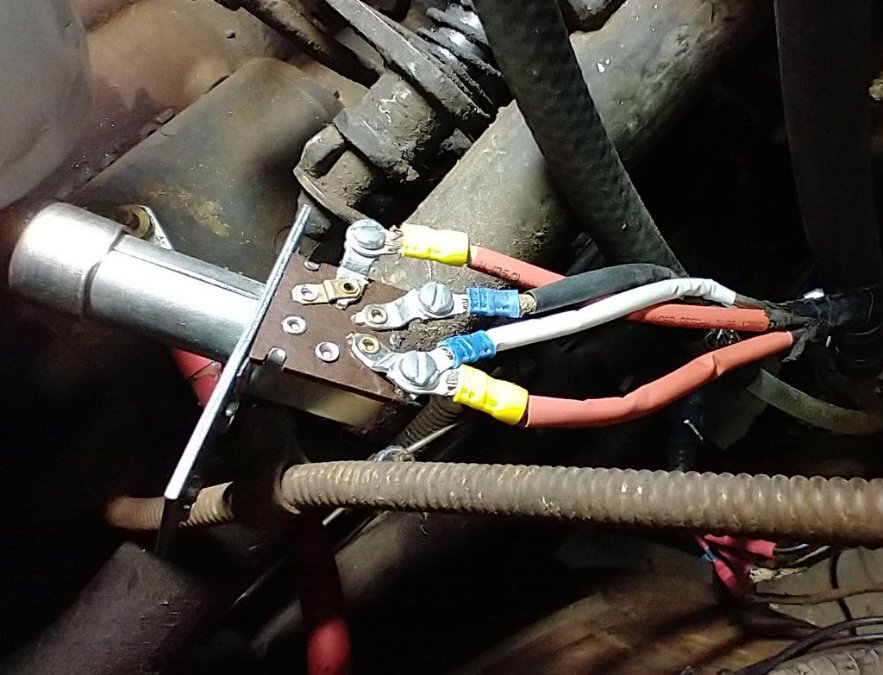
The mounting threads in the new switch are metric so the old mounting bolts have to be replaced. The old switch has the HOT lead on the "left" terminal but the new one has HOT on the right terminal, the housing is stamped for easy reference. It makes no difference which of the remaining two terminals get high or low beam, just make sure the dash indicator wire is attached to the high beam terminal.
Maybe this will be useful for those who may need a new switch, it's good to know we can still get a good quality, bolt-in replacement. By the way, the halogen sealed beam headlights on my 6v car are very good, I've given the grounds some love and the alternator feeds the bulbs at least 7 volts even at idle.
-
 1
1
-
-
1 hour ago, Sniper said:
It's interesting that the amber color is due to an external coating. I thought it would be the glass that was amber, wonder how the NOS bulbs were made.....
-
Plug the unused port. It is 1/8" NPT thread, same as a common pipe plug. Air won't escape from the open port, it will be drawn in by intake vacuum and create a lean run condition.
-
 1
1
-
-
10 minutes ago, mvpcustoms said:
pics were just an example, ive locked them down several times and no problems. finished product has additional support brackets and bushing in arm from master, no flex and no play. thanks for advice though
Excellent.
-
-
3 hours ago, desoto1939 said:
two years ago i had 5 tires removed from the rims, installed 5 new tubes, balanced and mounted for my 1939 600x16 tires at my local PepBoys store. They charged my $17.00 for each tire. They installed the Goodyear Airwheel tire with the ribs on the outside sidewall and they where also whitewall tires.
Rich hartung
That was then...this is now. Pepkids now charge $16.....just for balancing a tire. EVERYTHING has gone up the last two years.....
$110 for messing with four (actually eight tires...) tubed tires on old wheels is a reasonable fee per my experience.
Glad the "Coker selling 15 year-old tires" rumor has been put to bed.

-
27 minutes ago, Ivan_B said:
This comment is a bit outdated, but to anyone doing the carpet in the future: you should remove the pedals and push them through the small holes in the carpet instead of cutting the carpet all the way to the top.
Owners choice.
I've had the carpet out of my P15 more times than I wish to service the transmission and clutch and after messing with the carpet around the pedals I slit the carpet above the pedals. My carpet has a thick enough pile that the cuts don't show and they sure make it easier to get the carpet out and back in the car.
-
4 hours ago, mvpcustoms said:
I agree the dual-chamber master cylinder is a great upgrade for our cars, I did the same on my P15.
A couple of observations about your bracket, and the photos may not be giving me a correct impression. If that is a 1/4" bolt being used for the pedal pivot, I would absolutely upsize it to match the diameter of the bore in the pedal (1/2"?). It appears your bracket design has the bolt cantilevered with support only on one end. That pivot carries a very high load during a panic stop and if it bends or fails you have no way to develop pressure in the cylinder. A steel rod welded into the bracket to match the pedal bore might be the ultimate solution.
There also seems to be a mismatch in the bore sizes of the pedal pushrod pin and the eye on the pushrod. Once again.....not a place to have less than a perfect fit. Also keep an eye on the cantilevered portion of the bracket that carries the cylinder, that material looks a little light and you don't want any flex or fatigue cracks. A gusset could be added to tie the cylinder carrier to the major part of the bracket to stiffen up the structure.
The above comments aren't meant to be critical, just made out of concern about what is probably the single most safety critical component in the car.
-
Plum purty....enjoy!
-
Man...what's with all that white stuff on everything?? ?
-
3 hours ago, hep2jive said:
Thank-you! I love your videos! It seems to have been a valve
My mechanic said one was stuck and they needed adjusting. Before I'd be cruising and after the car was warmed up it get rough and kinda slightly miss and jerk. Did it randomly. Musta been that stuck valve.
3 hours ago, hep2jive said:Thanks everyone! I'll update tomorrow after I drive some more see if it randomly misses but I think we're good for now lol. It still will vapor lock a little (After 15 minutes of hot engine being OFF and i turn it back on) but I think that's the winter gas. The car always turns right on and a few revs of the gas pedal gets it running smoothly again. If I get gas or or stop for 5 minutes it fires right up. Never had this issue until winter gas here in Chicago but oh well.
Hope your test drives prove the drivability problem has been addressed. However......for sake of education we need to return to the matter of semantics.
What your mechanic remedied with the valve adjustment (not valve job!) was a tight valve, not a stuck valve. A stuck valve is just that, stuck open which prevents compression from occurring in that cylinder. It is a mechanical defect that usually requires some engine disassembly to resolve.
What your mechanic did was restore valve lash via the adjustment procedure so the valve could close completely. It wasn't "stuck" open but was still operating normally with the exception of not having enough clearance between valve and lifter to completely seal the cylinder.
Now.....vapor lock. What you are describing with your hot starts isn't vapor lock but fuel percolation. Vapor lock is when fuel boils in the fuel line so a "bubble" of vapor develops which prevents the fuel pump from developing sufficient suction to pull and push fuel to the carb.
Fuel percolation occurs when fuel boils in the carb bowl while a hot engine isn't running and overflows the bowl sending fuel down into the intake manifold. This causes a fuel puddle to form in the manifold which in turn creates a rich mixture when the restart is attempted. Once the engine is running the rich mixture clears and the engine again idles smoothly.
Hope this helps your understanding of what you are observing and will allow you to converse in a more accurate manner when describing engine issues with your mechanic.
Enjoy your ride!
-
 4
4
-
 1
1
-
-
Ahhhhhh…….gyromatic……details, details.
-
Nearly every engine problem we deal with is heat related....the only problem my P15 engine has presented when cold is a puddle of oil....... ?
-
 3
3
-
-
This may not help any but here is the linkage on my '48 Plymouth.
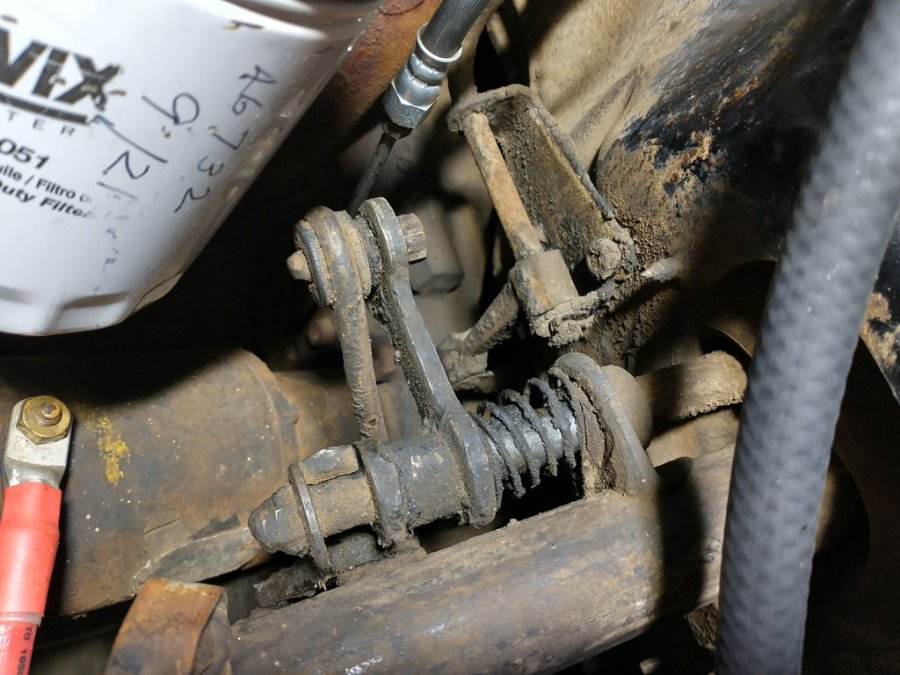
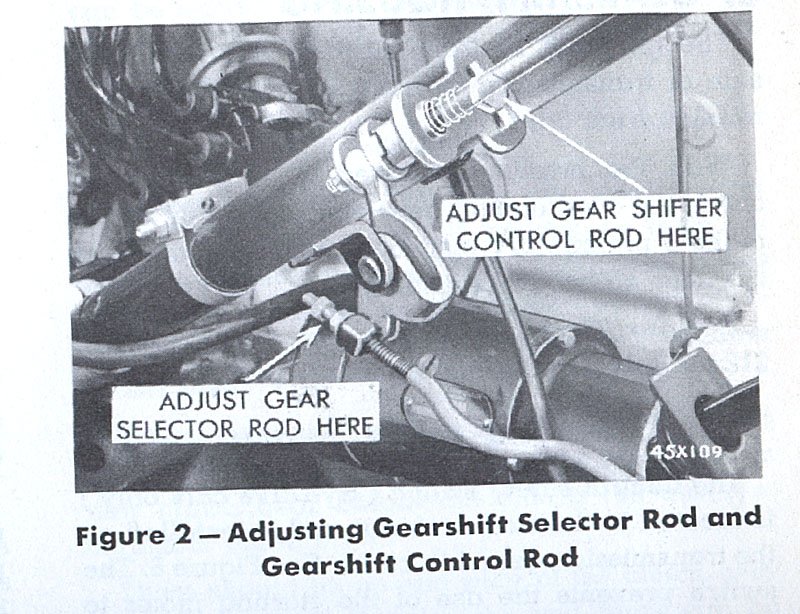
-
7 hours ago, hep2jive said:
I wonder if the car needs a valve job what are the symptoms? They don't clatter.
Let's work on semantics a bit.
A "valve job" involves removing the head and valve train, either replacing or grinding the valves, grinding or lapping the seats and putting the engine back together. This is usually needed only after many thousands of miles of service since a previous valve job or engine rebuild.
A "valve adjustment" is a maintenance procedure that doesn't require any disassembly other than removing the valve covers on the side of the engine. This procedure is usually done every few thousand miles along with other periodic maintenance and tune-up work.
You stated earlier that your engine was rebuilt last year and your mechanic recommended checking valve adjustment after 50 hours of running. However, it has been 12K miles since rebuild (in one year!) and the valves haven't been touched. Time for a valve adjustment! Run that procedure and check back with us, there is a good chance drivability will improve.
-
 1
1
-
-
51 minutes ago, keithb7 said:
My concern is mainly around Coker selling brand new tires that are dated 2006. I like to think I reset the date to 0 when I installed them. Aging typically begins at install date for me.
If Coker told me “Hey we are having Black Friday sale on NOS tires. They are brand new, but manufactured in 2006. Price is 20% off”. I’d likely pass. Now, if they were 60% off that might be a risk I’d take! Lol.
If I understand Bob's original post, the 2006 tires were purchased many years ago in CA. He stated he thought it was about ten years ago but I suspect it was closer to 2006.

Here is the quote from Bob's post:
"I bought my current tires from Coker when they had an outlet in Fresno about 10 years ago (I thought). Turns out they are a bit older- I checked the date code (which Coker places on the inside of the tire BTW) and it is stamped 40 06, which means manufactured during the 2nd week in October 2006! "
Nobody has shown evidence that Coker is now selling new tires with a 2006 date code. We need to be fair and accurate.

-
 1
1
-
-
9 hours ago, Eneto-55 said:
<snip>
I think if you have a trailer that the tires would also fit on, I would try one of those for fit, then put the older ones off of your trailer onto the car, and put the new ones on your trailer. Or even rotate them onto the trailer from time to time, so you get the benefit of their useful life. (I don't know about trailer axles, but that temporary spare my friend gave me even has the guide hole in it.)
What is it about trailer tires that means they are limited to 50 MPH? Rubber quality? Just the fact that they are bias ply? I've often wondered.
<snip>
Trailer tires have sidewalls that differ considerably from car tires. They are stiffer and don't need to provide proper steering and accel/deccel response as do car tires. High speed trailer tires are available, the last set I bought were rated at 85mph. That was a heavy tire......
For moving a car around a shop during restoration tire selection doesn't matter. Custom shops often use "donuts" which aren't even real tires during restorations. But I wouldn't drive my car with trailer tires, tires are the only thing connecting our car to the road!
-
 1
1
-


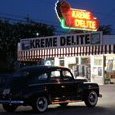

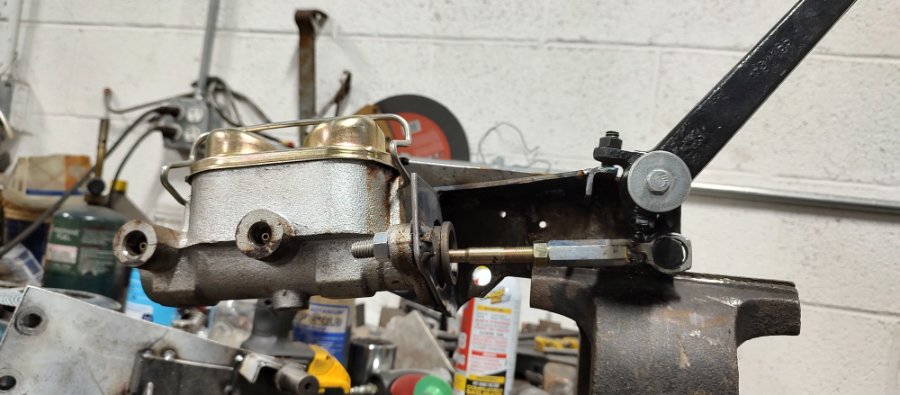
Dash Clock
in P15-D24 Forum
Posted · Edited by Sam Buchanan
If a reasonably priced inoperative clock for a P15 fell in my lap that is what I would do. I won't mention anything about looking for a clock because that might bump up against forum rules. ?
My phone number is BR 549......